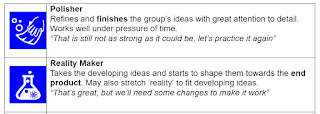The Documentary Genre
Each documentary has an individual style which is shown through the subject matter, themes and the cinematic techniques used. A documentary can also follow a film 'genre' as it would have similar conventions. Conventions include things such as the style of interviews, narration, voiceovers, shooting techniques and more.
Different Styles and Genres of Documentaries
Different Styles and Genres of Documentaries
Observational
- Filmmaker appears to be invisible as they observe and not intrude
- Filmed with a portable and handheld camera
- No rehearsals
Propaganda and Advocacy
- The message is persuasive and may only present one side of the view
- Intended to influence and not just inform
- Usually commissioned by organisations to get their message across
Propaganda and Advocacy
- The message is persuasive and may only present one side of the view
- Intended to influence and not just inform
- Usually commissioned by organisations to get their message across
Personal Journey
- Biographical/auto-biographical
- Focus on an aspect of a person's life or a specific event
- A range of genres including video diaries + observational
- If the subject is dead, archival footage or interviews with family are used
Archival
- Material already exists
- Still photographs, documents, footage from television and newsreel, fictional films and even artwork
- Music and sound is used to set an atmosphere
- Interview and voiceover narration are often used in conjunction with media sources
Drama
- Used for a famous or historical event
- Can't find or afford existing footage, or none exists
- Reenact the event using sets, actors and props
- Dramatic recreation based on historical evidence and eyewitness accounts
Social Issue
- Focuses on a local or international issue important within a community
- To raise awareness and create social change
Comedy
- Uses humour but has a serious message
- Achieved through unusual characters and locations, satire, and parody
Doco Essay
- Based on a filmmaker's strong point of view on the subject or issue
- Documentary storytelling with a thesis and well-developed arguments to inform the audience
- Research, source materials and elements from different film styles are used to construct an argument
In conclusion, I believe that the type and style of documentary that will best align with the sort of documentary I think we will be making is the social issue genre. This is because our topic is already essentially a social issue and the purpose of the video will also to be to raise awareness.
Research in Documentaries
Research is the most important stage as this is when you find out what you want to present to the audience. Integrity is also an important part as you have to present the truth and what actually happens. The key message is that preparation is everything as making a film isn't just picking up a camera and hoping you will have footage in the editing room
Treatment in Documentaries
A treatment is what the filmmaker dreams their film will be and although it might alter along the way, it is important to set down a vision at the beginning. It clearly states the filmmaker's idea and clarifies their point of view through a description of the film which contains some research, sections of dialogues and images. The treatment should convince the reader that the filmmaker is professional and imaginative and that the documentary is worth making.
Link to our group's treatment:
https://docs.google.com/document/d/14jIWNa0UgVZEz0dclBW-BF8JoEVcOUFYyu2j6FiCS8U/edit?usp=sharing
Ethics in Documentaries
There are many legal and ethical considerations to understand. It is crucial to seek and obtain permission to film a person and then make sure that the footage isn't edited in a way that it is taken out of context or misrepresents their point of view. Moreover, it is important to present the truth and tell the story truthfully from the filmmaker's point of view.
Documentary filmmakers should continually seek the truth and not distort the importance of events. They should also clearly disclose where information has come from and publicly credit all material provided by outsiders. The people in the documentary should also be aware of why they are being filmed in the context of the film.
Documentary filmmakers should not present information that they know is false or manipulate images or sounds in a way that could mislead the audience. They should also not plagiarise from other filmmakers or present re-enacted footage as real footage.
Codes and Conventions of Documentaries
Voiceover: usually authoritative in some way, allows the audience to think that they have specialist knowledge to some extent
Real footage of events: all events presented to the audience must be real and the footage should always stay 'real' and unaltered in any way.
Interviews with experts: used to authenticate the views presented in the documentary. Might present the opposing perspective to the message of the documentary, although then the filmmaker will usually rebut them in some way
Use of text and titles: used to highlight and label dates, names and are considered as a quick way of conveying information
Sound: sometimes music is added to add effect to the scene and is used as a bridge between scenes
Set-ups: used to set up typical scenes, like a classroom instead of actually using one
Visual coding: things like props and costume is used to generate an effect to show who the character really is
Contacting our Primary Sources
Earlier on in the project, I emailed an expert in bokashi, Paul Melsom about an interview. This interview was conducted in early January.











